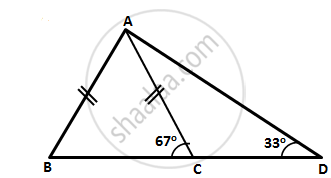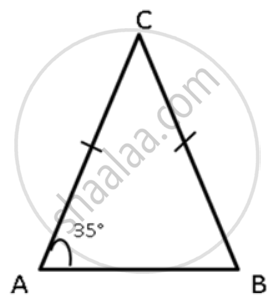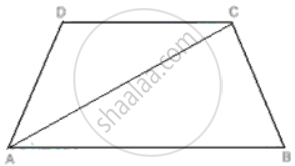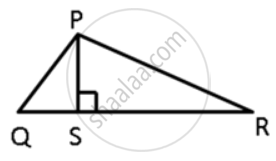Advertisements
Advertisements
प्रश्न
In the following figure, write BC, AC, and CD in ascending order of their lengths.
उत्तर

In ΔABC,
AB = AC
⇒ ∠ABC = ∠ACB ..(angles opposite to equal sides are equal)
⇒ ∠ABC = ∠ACB = 67°
⇒ ∠BAC = 180° - ∠ABC - ∠ACB ...(Angle sum property)
⇒ ∠BAC = 180° - 67° - 67° = 46°
Since ∠BAC < ∠ABC, we have
BC < AC ...(1)
Now, ∠ACD = 180° - ACB ...(Linear pair)
⇒ ∠ACD = 180° - 67° = 113°
Thus, in ΔACD,
∠CAD = 180°- ∠ACD - ∠ADC
⇒ ∠CAD = 180° - 113° - 33° = 34°
Since ∠ADC < ∠CAD, we have
AC < CD ...(2)
From (1) and (2), we have
BC < AC < CD.
APPEARS IN
संबंधित प्रश्न
Show that of all line segments drawn from a given point not on it, the perpendicular line segment is the shortest.
If two sides of a triangle are 8 cm and 13 cm, then the length of the third side is between a cm and b cm. Find the values of a and b such that a is less than b.
D is a point in side BC of triangle ABC. If AD > AC, show that AB > AC.
Name the greatest and the smallest sides in the following triangles:
ΔXYZ, ∠X = 76°, ∠Y = 84°.
Arrange the sides of the following triangles in an ascending order:
ΔDEF, ∠D = 38°, ∠E = 58°.
In a triangle ABC, BC = AC and ∠ A = 35°. Which is the smallest side of the triangle?
Prove that the perimeter of a triangle is greater than the sum of its three medians.
ABCD is a quadrilateral in which the diagonals AC and BD intersect at O. Prove that AB + BC + CD + AD < 2(AC + BC).
ABCD is a trapezium. Prove that:
CD + DA + AB > BC.
In ΔPQR, PS ⊥ QR ; prove that: PQ > QS and PR > PS
